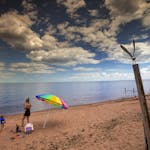As St. Paul students continue their learning at home, district leaders have determined what it will take to get at least some kids back in school part-time.
It is an involved process with plenty of ways to get knocked off track.
A 24-item checklist has been set up to enable students to shift from distance learning to a hybrid of remote and in-person instruction, with 16 goals deemed critical enough that a failure to meet just one would scuttle the move. The hurdles include concerns from having enough bus drivers to making sure schools are stocked with personal protective equipment.
School board members received a briefing this week ahead of a Sept. 25 checkpoint date during which Superintendent Joe Gothard could recommend a return to classrooms beginning Oct. 19.
Even then, a return to buildings would come in four stages, with the first involving special-education students. Then would come kids in preschool to grade two, followed by grades three to five and grades six to 12.
The board presentation came on the first day of the 2020-21 school year — hours after the district and the St. Paul Federation of Educators agreed to fine-tune distance learning in ways that Gothard said should give parents a better idea of what to expect. Structure was needed, he said, but not at a cost of overwhelming teachers.
"It's not always an easy balance," Gothard told board members of the negotiations process. "But we have students and families right now who need us more than ever in this time of COVID-19."
Board Member Jessica Kopp, citing community concerns about taking such talks down to the wire, said efforts should be made to minimize anxiety going forward.
"We're going to be right back at the table talking again," Kenyatta McCarty, the district's human resources director, said of coming hybrid-related negotiations. "We have a nice foundation with this one."
St. Paul already has said that when it moves to a hybrid of virtual and in-person learning that students will be split into two groups, with one attending on-site Mondays and Tuesdays and the other on Wednesdays and Thursdays.
The boxes to be checked to make it happen include:
• 95% of students having iPad access and Wi-Fi connections.
• Every site being supplied with personal protective equipment for staff, students and visitors.
• 95% of the school's instructional staff being available for work.
• Room use mapped out at every site with each room set at 50% capacity with social distancing.
• 80% of needed bus drivers available for work.
• Firm enrollment numbers for 95% of the schools used in each stage, including the Virtual Learning School, the district's new yearlong distance learning option.
The district had asked families to register for the online school by Aug. 21, but the option will remain open throughout the year, said Jackie Turner, the district's chief operations officer. McCarty said 13% of district students are now enrolled in the Virtual Learning School, up from 11%, or 3,972 students, on Aug. 31.
Gothard also has set Oct. 14 as a date on which to recommend the possible return of students on Nov. 16.
In the meantime, the district plans to open distance learning support centers in the coming weeks at five high schools: Johnson, Harding, Central, Humboldt and Washington Technology Magnet. There, students can receive in-person academic and technology support, and special-education assessments can be conducted.
Turner said each site could serve 100 students a day, with ample space to get families in and out of buildings safely. Board Member Steve Marchese said he hoped the sites also could be real-time models for parents to see the protocols that are to be in place in a move to a hybrid system.
Anthony Lonetree • 612-673-4109
![Michael Schulze prepared several iPads to be deployed to students. ] Shari L. Gross • shari.gross@startribune.com As St. Paul students continue to l](https://arc.stimg.co/startribunemedia/A6R3U54HLJNP3QBLKCJGWZ7K3E.jpg?fit=crop&crop=faces&w=550&&auto=format)



